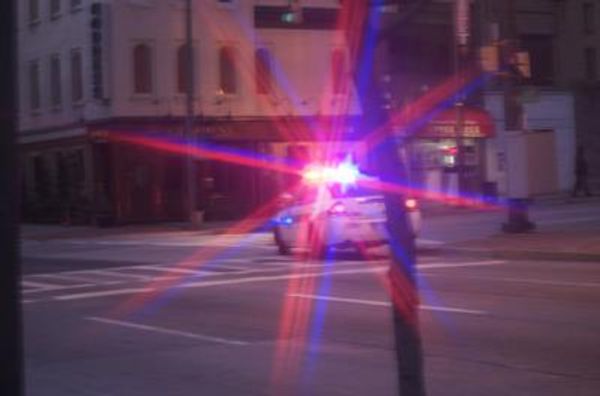
When Adnan Sheikh took his family on holiday to Sri Lanka last October, he booked them into a hotel for two weeks in Sarakkuwa beach, just off the coast from where the X-Press Pearl cargo ship caught fire and sank five months previously.
Sheikh had been charmed by the online pictures of golden sandy beaches. But when the family arrived, it was a different story.
“My kids wanted to play on the beaches and swim, but the beach was black and it seemed unsafe to even walk [on it],” says Sheikh.

The charred fuel oil and burnt debris were from the wreckage of the container ship, and littered among them was perhaps the worst hazard of all: tiny plastic pellets called nurdles.
Millions or even billions of nurdles have been washing up along the island’s coastline for hundreds of miles, from Mannar in the north to Kirinda in the south. A UN report called the incident in May 2021 the “single largest plastic spill” in history, with about 1,680 tonnes of nurdles released into the ocean.
Most of them were partly burnt and contaminated with chemicals and debris from the ship spill, posing even more of a threat to marine life – and the local community.
The disaster sparked a widespread clean-up effort. The the Marine Environment Protection Authority (Mepa) claim it organised about 50,000 local people to collect nurdles and other debris all across the island. Mepa says they have collected an estimated 60,000 bags of it so far.
On Sarakkuwa, the volunteer cleaners are mainly women. They remove the nurdles using trommel machines, drum-like rotating sieves that filter plastic pellets from the sand. Other methods include hand-sieving and simply picking them out. In Sarakkuwa beach alone, the locals collect an average of 80-100kg of nurdles and debris every day, which they exchange for 3,000 rupees (£11) a day from the government.
While the biggest, most visible piles of nurdles have been removed, it’s just the tip of the iceberg, says Hemantha Withanage, director and environmentalist at the Centre for Environmental Justice in Sri Lanka.
“They completed the surface cleaning of nurdles, but nurdles are now buried under the sand, about two metres deep in some places. Most burnt nurdles are tiny particles we can’t remove with sieving or trommels.”

A Sri Lankan firm has developed a new machine that can remove smaller pellets, but Mepa has rejected it due to its cost, says Withanage – though he claims the Sri Lankan government could attempt to recoup the expense from the shipping company. Sri Lanka has so far filed two interim claims.
There is widespread anger here at the company’s perceived role in the nurdle spill. “These nurdles were stored inside polythene bags instead of hard containers, which made it easier to spill,” Withanage says.
But Shmuel Yoskovitz, chief executive of X-Press Feeders, says his company is not to blame. “It is the responsibility of the shipper to pack the container, and thousands of containers are packed to these international standards every day as set by the International Maritime Organization, an agency of the United Nations. Our company carries boxes on our vessels; we are not a shipper and do not operate the boxes. Therefore we do not control the packaging in the containers.
“Furthermore, we rely on accurate shippers’ cargo declarations for visibility into the contents of the container,” he says. “All containers are sealed and, by law, cannot be opened or inspected by us. As a company, we support tighter international regulations on the transportation of plastic nurdles.”
A few weeks ago, a team from Mepa found a large polythene sack of nurdles buried a metre under the sand. Sri Lanka wants nurdles declared a toxic waste, and has submitted a proposal to regulate maritime transportation of plastic pellets to the IMO, which will be discussed this year.

But that will not help Sri Lanka’s current situation. In 2019, before the pandemic hit, tourism made up 12.6% of Sri Lanka’s GDP, and is roughly the third largest source of foreign exchange.
To Naleen Chathuranga, pastry chef at the three-star Goldi Sands hotel, located 10 miles north of Sarakkuwa on a vast sandy beach fringed with coconut palms and overlooking the azure ocean, the damage is deep.

“Nurdles are everywhere now,” says Chathuranga, digging his toes into the moist sand to unearth dozens of tiny pellets. Nearby, as two teenage boys swim, every wave leaves a line of nurdles along the shore.
But tourism can recover, he says. “Tourists know more than us about the ship disaster, but they still come here.” Visitors are slowly returning thanks to the area being close to the country’s international airport; for many tourists, Negombo is a pitstop before they fly out. The luxury hotels also spend money on their own private cleanup efforts to keep their local beaches clean.
For the fishing community, however, there are fears the impact could be felt for a long time. “Fishing is really poor these days,” says Veerapalli Shiva, a 51-year-old fisherman originally from Kochchikade in Colombo.
Shiva goes out to sea every day with 17 others who work for the owner of their boat. He only earned 250 rupees today, which is all he has to provide for his wife and three school-age children.
“We’ve been fishing here since November, and not a single day was lucrative,” he says. “We only find small fishes now. Large fishes, who bag a better price in the market, are missing. This has never happened before.”
Withanage says that most fishers were out of work for several months after the nurdle spill, and that the government was little help: Shiva only received 15,000 rupees as compensation; some received just 5,000.
“The authorities have also forgotten that we are fishing in contaminated waters,” Withanage says. “These harmful effects should be added to the compensation claim so that the government can use funds to help them.”
Meanwhile, the nurdles keep coming, piling up on the decks of the fishing boats.
“Sometimes our feet were buried in tiny pellets,” Shiva says. “We don’t have a choice. We touch them every day. They have become a part of our life now.”

• This article was amended on 26 January 2022 to clarify that the number of clean-up crew is an estimate by the Sri Lankan Marine Environment Protection Authority (Mepa), and to remove a reference to the 50kg capacity of the bags: in fact, the bags differ in size







